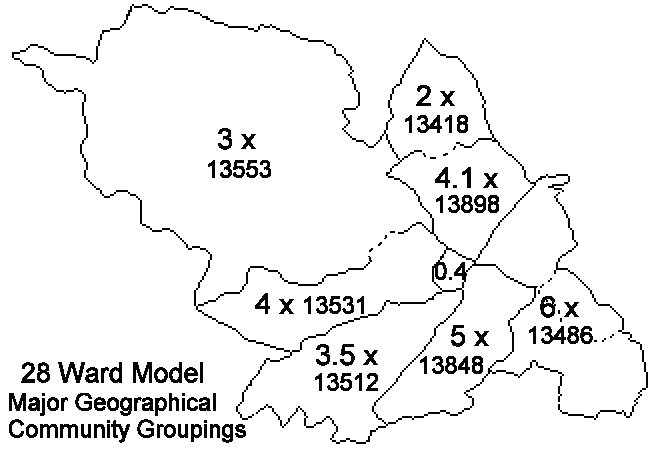2. Geography
2.1 The geography of Sheffield distinctively arranges the city into sectors bounded by hard features. The upper and lower Don valley, the Sheaf valley and the Sheffield Parkway form distinctive and easily-identifiable boundaries, and for most of their lengths run through areas of little population or areas with few cross-cutting communications links. Additionally, the River Rivelin and the River Porter form fairly hard boundaries, though these become softer near to the city centre. Additionally, the outer Ring Road along Ridgeway Road and the Carr Brook evolve into boundaries. Most of the sectors happen to have electorates very close to a whole number of wards, which also makes the task easier. It must be noted that these are geographical sectors that contain very different and disparate communities.

|
2.3 A set of proposals for new wards can be made in individual sectors with little impact on other sectors. In fact, any final implementation could very easily use the most appropriate model for each sector from different original submissions, regardless of which overall submission each sector was part of.
2.4 The geography is so distinctive that my model and the City Council’s model have both formed within the same sector model, and I am confidant that any submissions from other parties will fit into very similar geographical sectors.
2.5 Accordingly, this report details proposed new wards for the following six sectors of the city, each of which can be slotted into any other submission to make a complete model: